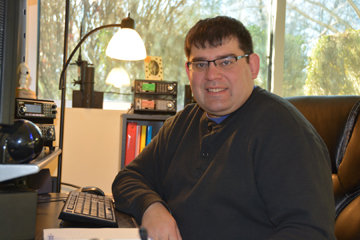All of the various “Zip Code” type scanners such as the Uniden HomePatrol, BCD436HP or BCD536HP, Whistler WS 1080/1088/1095/1098 or the GRE and RadioShack versions use a Micro-SD Card to store the database and recordings. This SD Card is much like a disk drive without moving parts, it can be written to and read by a computer or a device; in this case your scanner.
Occasionally these cards can get corrupted which causes them to stop functioning. The scanner will display an error message and will not operate until you repair or replace the SD Card. Thankfully this is not usually a serious issue and rarely results in anything other than some annoyance. The worst that can happen is that you lose your Favorites Lists and any recordings you may have on the card.
First let’s talk about WHY this happens. Most of the time it is due to the power being removed from the radio abruptly. These scanners are basically small computers and, like all computers, they need to be shut down properly. By doing so the radio has a chance to finish writing information to the SD Card. If the power is removed before this is done then an incomplete or corrupted file may be left. When you turn on the radio the next time it doesn’t know what to do with the file and displays the error message. While this does not occur every time the radio is improperly shut down, it only has to happen once to ruin your day.
Now there is always the possibility that the card or even the radio itself is defective but that is very rare.
What can you do to prevent this from happening to you? The best thing you can do is to make sure you turn the radio off before removing power to it. If you have it mounted in a vehicle be sure to turn off the radio by use if the volume/power knob before starting the car or turning off the ignition. If the radio loses power while still turned on then the card can get corrupted. Same goes for portable radios. do not pull the batteries unless the radio is turned off.
OK, my card got corrupted, is my scanner dead? Usually no. These cards can usually be reformatted and the database rebuilt. Even if the card is shot it can be replaced and the new card set up for your radio. You can get replacement (or spare) Micro SD Cards almost anywhere.
What can you do if this occurs to you? First make sure the card is really corrupt, some times they are just loose. Remove the card and reseat it, making sure that it clicks into place. When you turn on the radio, if it works then you are back in business. If you still get the error then you will likely have to reformat the card.
Of course the easiest way to get past this is to let us fix it for you! Just download, print and fill out the form at https://www.scannermaster.com/v/vspfiles/files/pdf/homepatrol-servies-order-form.pdf. Send it to us with the radio and we will do the rest!
To reformat the card it is best to use an application specifically for this. You can use a free program available from https://www.sdcard.org/downloads/formatter_4/. Download the one for your version of Windows and install it. You can use an SD Card reader if you want or leave the card in the radio and connected to the computer in Mass Storage Mode. If you reformat it using Windows directly it may not be done in the proper format. Sorry Mac guys; you need Windows for this!
Once reformatted you need to reinstall the database. On Uniden scanners this is done as follows:
1: In Sentinel under the Home Patrol menu select Clear User Data, click on the Display All Drives box.
2: Be sure to select the correct drive letter then click OK. (You do not want to erase your C Drive!)
3: Run Sentinel on the computer and select the Update Master HPDB option in the Update Menu.
4: In Sentinel under the HomePatrol menu select Write to HomePatrol .You may need to select that drive again, but it will not show the serial number of the radio this time.
5: Eject the card and put it back into your scanner (if not already there). When you turn on the scanner you should be all set. You many need to reset your location, Service Types etc.
Of course this requires that you have Sentinel running in a Windows computer. If you don’t have Sentinel installed (it comes on the SD Card…) you can download it from Uniden’s website.
Whistler, GRE and RS scanners use slightly different procedures, check the manual for your radio for these.

